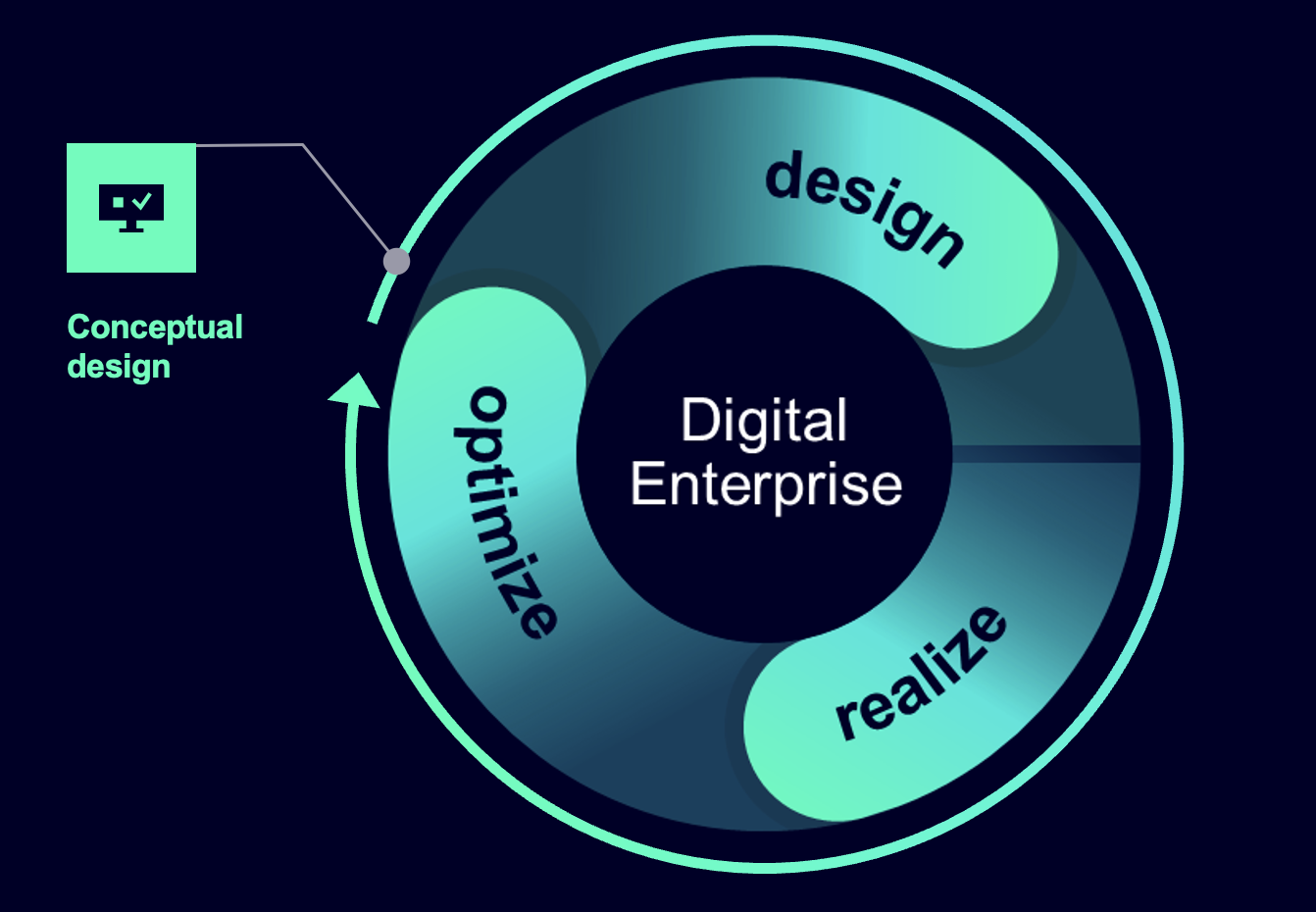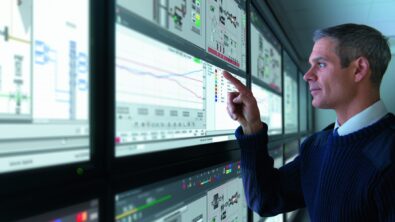Sustainable products start at conceptual design

Digitalization and sustainability are topics we talk about in tandem, for businesses to succeed in tomorrow’s markets. They are two very important transitions for a business looking to become a market leader or carve out a niche in an existing industry. But they can feel somewhat abstract because there are so many different solution paths businesses can take towards sustainability with digitalization. To clear up some of the confusion on where to start, I wanted to explore the earliest stages of the design process and how it is impacted by sustainability goals – conceptual design. While it is a fairly common place to start any new product, design also determines up to 80 percent of a product’s overall carbon emissions. So let’s dive in to see what conceptual design for sustainable products entails.
Defining what is and what isn’t with conceptual design
Much of the work done in conceptual design is determining the goals and requirements of the product. This has traditionally included metrics like performance, manufacturing costs, productions times, and relevant regulations. With sustainability being incorporated into the drivers of a business and its products, the high-level metrics of cost, quality, and time have expanded to include sustainability. But even that is a vague concept for designers to work from and it will mean different things depending on the intended product. An automobile for instance would have regulatory requirements for environmental impact based on the region of sale – some might be requirements to receive incentives, others could be penalties if a requirement is not met.
Conceptual design is when these requirements are outlined for the product. And those in the aerospace, automotive, or any other industry design complex products might recognize this as a key component of a model-based systems engineering (MBSE) methodology. And that is not pure happenstance, an MBSE strategy is essentially a requirement for some of the complex optimizations of a product for sustainability. To understand the complete CO2 breakdown of a product, you need to look beyond isolated metrics and design decisions, and predict emissions from your supply chain, energy providers, production processes, and the product usage lifetime.
But unless you are already coming to the table with historical data on previous products, supply chains, and more, the digital twin will need to be continuously updated as this information becomes available. So when I said conceptual design is when requirements are outlined, I also meant when they are re-outlined, because conceptual design is often an iterative process – through individuals products and across complete enterprises.
What might conceptual designs contain?
A great example of these early design criteria comes from the battery manufacturing industry. Whether the batteries are for electric vehicles, grid storage, or personal electronics, there is a real value in batteries to decarbonize entire industries. But when it comes to a broader understanding of sustainability than only decarbonizing, there are more metrics to understand and requirements to meet. One common challenge to solve is the impact of lithium-based cell technologies – it is a rare material and has a substantial impact on the environment due to mining practices, but for mobile products like cars or a cellphone the energy density cannot be beat. A grid storage battery, however, does not need to account for low-weight or low-density storage media and can instead optimize their designs more for cost and low-impact materials as seen in sodium-ion cells.
Whatever the decisions, it is important to outline the requirements and reasoning in the conceptual design process. This single source of truth on what the product should be, then follows through to future decisions on design, production, maintenance, and decommissioning of the product as the digital twin.
Defining sustainable design
The ultimate goal of conceptual design is to understand what a product is supposed to be, and it may evolve as more data is gathered. But the important thing is that these requirements are captured in the digital enterprise so that the product that comes out at the end fits the need it was trying to solve in the market. And conceptual design is only a taste of what sustainable design encompasses, for more information come back next week to read through the role of supplier relationships in designing the sustainable product of tomorrow.
To learn more about sustainable design, check out our website. And for the next part of the story – sustainable supply chains – there is another blog waiting for you.
Siemens Digital Industries Software helps organizations of all sizes digitally transform using software, hardware and services from the Siemens Xcelerator business platform. Siemens’ software and the comprehensive digital twin enable companies to optimize their design, engineering and manufacturing processes to turn today’s ideas into the sustainable products of the future. From chips to entire systems, from product to process, across all industries. Siemens Digital Industries Software – Accelerating transformation.
For more information on Siemens Digital Industries Software products and services, follow us on LinkedIn, Twitter, Facebook and Instagram.


